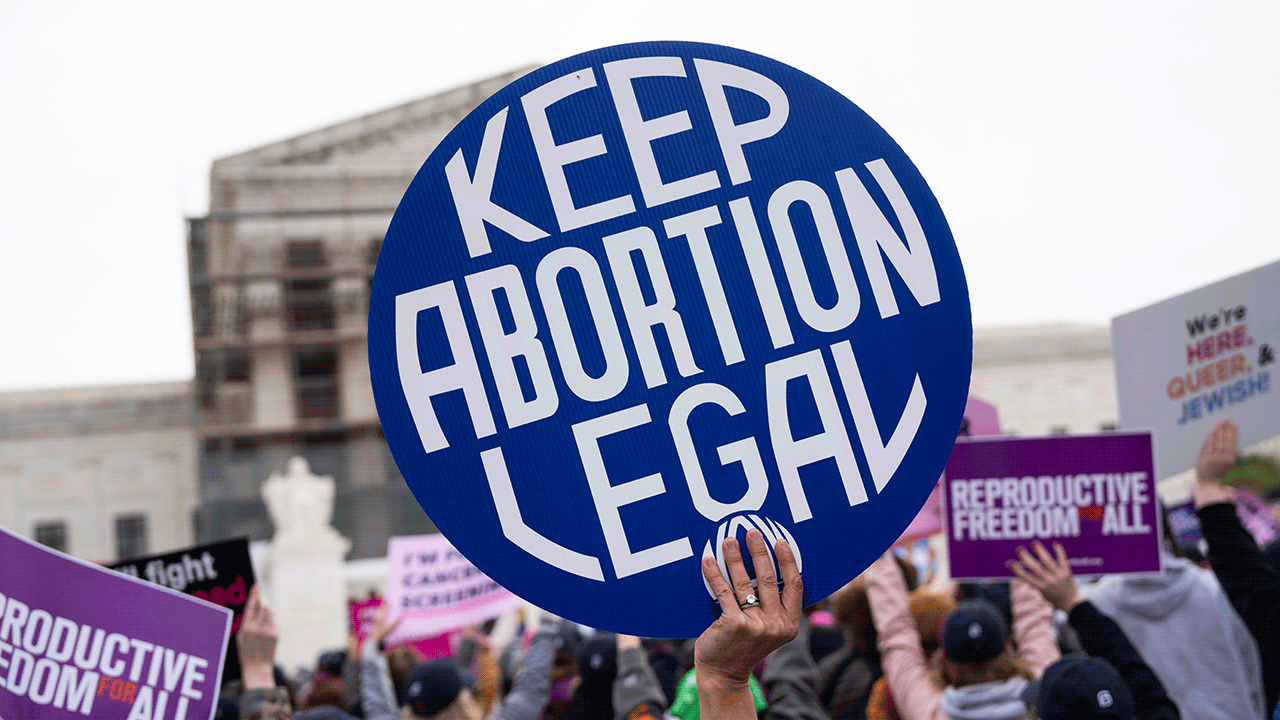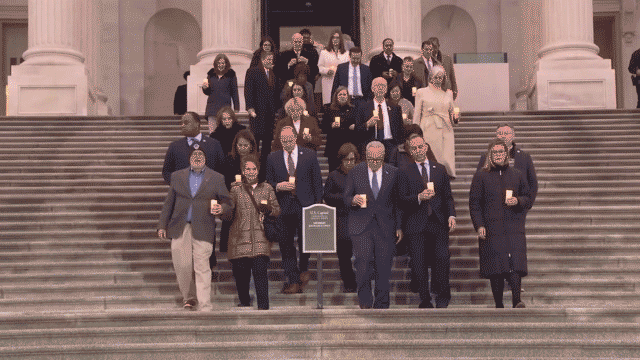One of the enduring myths in Washington is that when watching House proceedings on TV, the coverage is provided by the "C-SPAN cameras."
Nothing could be further from the truth.
It all comes down to lawmakers not paying attention to the debate on the House floor. Or members leafing through Roll Call or The Hill as they lounge in the back row somewhere. Or their sidebar chats with other members about a bill they're trying to dislodge from a subcommittee. Or the fact that a lawmaker is snoozing off to the side. Or clipping their nails. Or picking their nose.
Gross.
Although it's not written anywhere, those are some of the reasons why private TV cameras are not allowed in the House chamber. And that is why private cameras will yet again be denied entry to the House chamber during the 112th Congress.
The House began to televise its proceedings in 1979. But with rare exception, almost every frame of video that's ever emanated from the House chamber originated from a government-controlled camera. The House has a number of fixed cameras positioned throughout the chamber to show debate when lawmakers meet. The House then provides a feed to any news outlet which cares to broadcast some of the proceedings. Privately-funded C-SPAN just happens to carry House sessions "gavel to gavel," start to finish. Perhaps that explains the popular misconception that the cameras belong to the network. And news outlets ranging from FOX to CNN to NBC just pick up the feed if they want to put the House floor live on the air or pull a soundbyte or two.
The camera issue is important now because House Speaker John Boehner (R-OH) recently turned down the latest request by C-SPAN Founder and CEO Brian Lamb to allow his company's cameras - or for that matter - the cameras of any other news organization, to televise what happens in the House chamber.
Lamb has pushed the issue since C-SPAN's inception. But he really went to the mat in 1995 when Republicans rode to power and promised more transparency. Then-House Speaker Newt Gingrich (R-GA) rejected Lamb's entreaty. And former House Speakers Dennis Hastert (R-IL) and Nancy Pelosi (D-CA) have followed suit when Lamb made similar requests at the beginning of their tenures.
In the interest of full-disclosure, my first job in Washington was at C-SPAN. And as a board member of the Radio-TV Correspondents Association (RTCA), I helped draft the organization's initial letter to Boehner late last year which urged him to consider a variety of proposed changes regarding media access in the Capitol. My term on that panel expired in late December.
So what's the fuss about who controls the cameras?
Well, for starters, the House imposes rules on what shots can be shown from the chamber. The cameras typically only focus on whomever is speaking, whether it's in the well, the manager of the bill or the presiding officer on the dais. The cameras zoom in on one of the House reading clerks when they speak. The cameras pull back to wider shots of the chamber during votes or when they're waiting for action to begin.
It's a rote succession of shots. And back home, that's about all the viewer ever sees.
What does the viewer miss?
Everything else. One may think that whomever is speaking is the center of attention in the House chamber. But that's only a portion of the story. People watching at home miss the reaction shots. They miss those animated conversations off in the corner or heated negotiations as leadership twists the arms of vacillating lawmakers about how to vote.
And that's as much a part of the story as who is speaking.
In fact, the House floor is a multi-ring circus. And newcomers are always amazed at how "busy" and "loud" the House chamber is, as many on the floor aren't even paying attention to the debate of the hour.
Imagine a baseball game where the TV cameras only captured the pitcher and batter. No one would ever know if the runner on first base was leaning toward second, about to steal. No one could tell who was on deck. No one could see if anyone was warming up in the bullpen. And what if there was a rhubarb over a blown call? Forget it. You'd never see it. Viewers would only have a partial picture of what was transpiring on the field.
The same is true in the U.S. House.
Boehner responded to Lamb that he would maintain the "precedent set by former speakers" noting that "the dignity and decorum of the United States House of Representatives - are best served by the current system of televised proceedings provided by the House Recording Studio."
It's the House Recording Studio that literally calls the shots of what people will see when telecasting House sessions.
In turn, C-SPAN was dismayed that Boehner failed to change the policy.
"We're disappointed to learn that despite 32 years of experience with televising its sessions and in an age of ubiquitous cameras in political life, the House of Representatives has chosen not to allow C-SPAN's cameras into its chamber," said C-SPAN in a statement. "We continue to feel that the public is best served by seeing a more complete picture of the legislative process than what's delivered by congressionally controlled cameras."
To be fair, Boehner did alter some rules by announcing that reporters will be allowed to broadcast from inside the chamber during certain events. The new rules will also permit some televised stakeouts in locations close to the House floor.
But that still doesn't give viewers at home the full picture.
To be sure, the debate over "reaction shots" in the House chamber has a long and sordid past.
During his speakership 16 years ago, Newt Gingrich denied C-SPAN's request for complete access. But he did instruct the House Recording Studio to start providing cutaway shots of activity throughout the House chamber. That experiment lasted about a week as the House feed showed lawmakers dozing, goofing off and reading. Callers then lit up the Capitol switchboard as they phoned to admonish their lawmakers for not showing respect to the speaker or accusing them of sloughing off on the taxpayer's dime.
The lawmakers then complained to Gingrich who hastily halted the exercise.
In fairness, Boehner and others can make a strong case for restricting "private" access to the House chamber. Lawmakers consider the House floor a sanctum, one of the few places on Capitol Hill where they can escape reporters, lobbyists and even staff. And many of those behind-the-scenes negotiations and conversations help move the gears of government. One wonders if the public interest is truly served if cameras were able to document the jot and tittle of every conversation that unfolds in the House chamber. And while most argue that more sunshine is necessary, there are inevitably proprietary conversations that lawmakers need to hold out of public view. If any lawmaker feared that private cameras could capture those chats, they'd be sure to duck into the cloakroom or any other location in the Capitol where cameras aren't present. In that case, the presence of unfiltered cameras could actually show LESS of what happens in Congress if those episodes just unfolded away from the lenses.
Of course, Boehner's decision could create another headache for him. Boehner and scores of other Republicans vehemently protested in 2009 and 2010 as Democrats crafted the health care law behind closed doors. Boehner implored Democrats to throw those doors open. That didn't happen. And now Democrats could conceivably accuse Republicans of violating the same spirit of transparency.
This issue isn't limited to the House. The Senate Recording Studio controls cameras in the Senate chamber, too. Similar rules ban private cameras there as well.
Senate control of cameras created a problem for private media when legendary Sen. Robert Byrd (D-WV) died. Byrd's family made arrangements for the senator's body to lay in repose in the Senate chamber. Yet the existing cameras inside the Senate chamber would remain off because the Senate wouldn't be in session for this memorial.
On behalf of the RTCA, I penned a letter to the Senate leadership asking that the cameras be switched on to document this historic event. I also asked the Senate to consider allowing the networks to create a "pool" to televise the Byrd memorial. The networks took similar steps to create an unobtrusive video feed of similar memorials conducted in the Capitol Rotunda for Presidents Reagan and Ford.
The letter was clear in indicating media would be discreet and respectful of family and friends in mourning. In addition, we offered to turn off the cameras for private moments at the beginning and end of the memorial.
The Senate summarily rejected that request, too, citing the wishes of the Byrd family.
Without question Robert Byrd is one of the five most-prominent figures in the history of the Senate. It may be totally appropriate for his body to rest in the Senate chamber. But that's the issue: it's the Senate chamber, not a private funeral parlor. One would wonder, if such a hallowed public space and taxpayer dollars are used for such a service, shouldn't TV cameras should be allowed to show it?
If privacy is the goal, then there are plenty of locations that could be used besides the U.S. Capitol.
Here's the saddest part of the Byrd memorial: the decision to ban cameras has prevented historians 200 years in the future from viewing Byrd's final moments inside the Senate chamber that he so loved.
Overall, reporters have pretty good access to the U.S. Capitol. But the House and Senate chambers remain closed when it comes to video. There has been much written in the past two weeks about "state-controlled media" in Egypt. The restrictions on media in the Middle East are light-years away from the issues discussed here. But any way you slice it, the cameras in the U.S. House and Senate chambers are in fact controlled by the government.
























